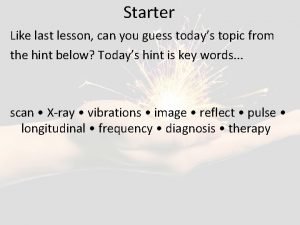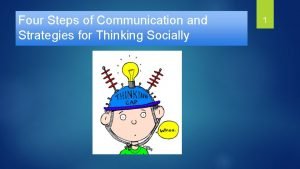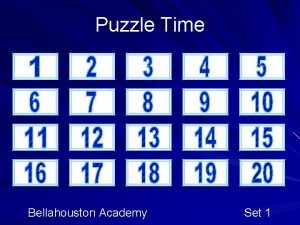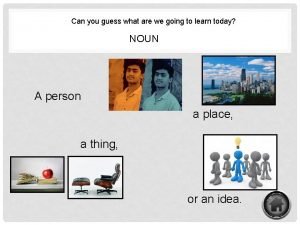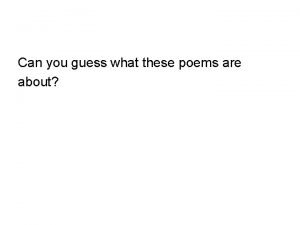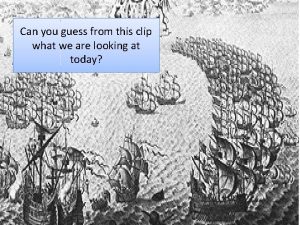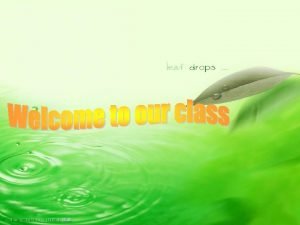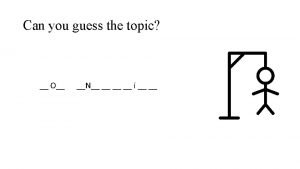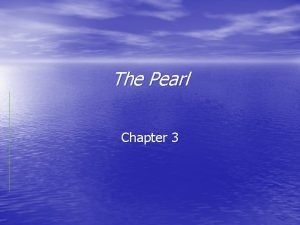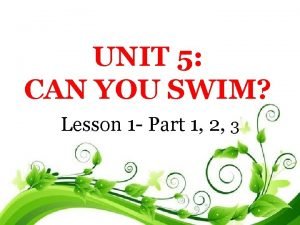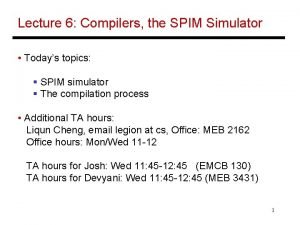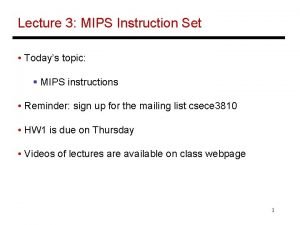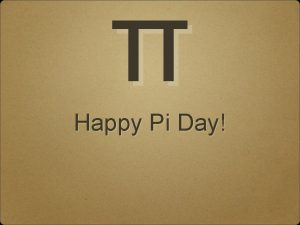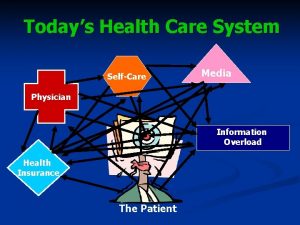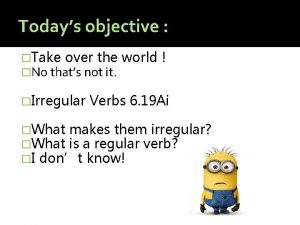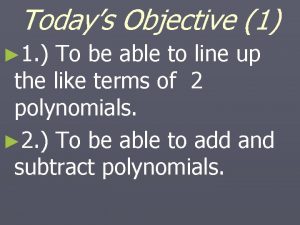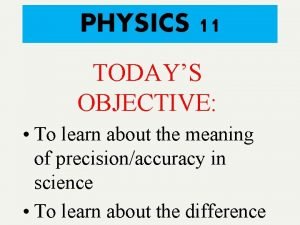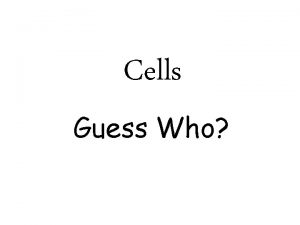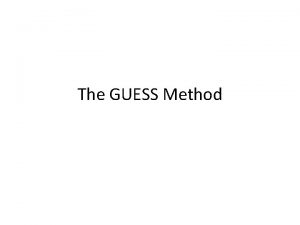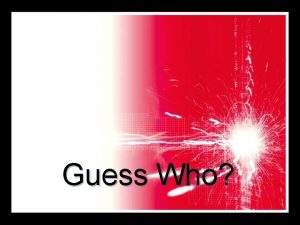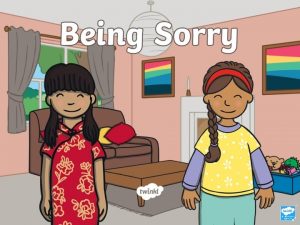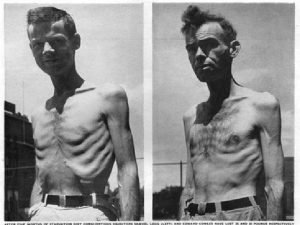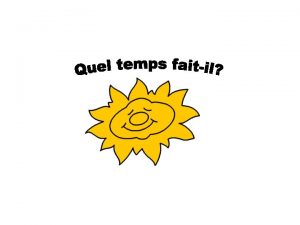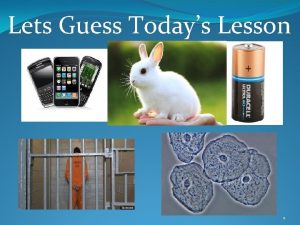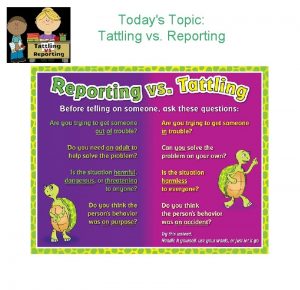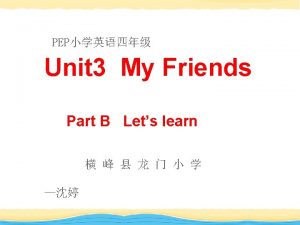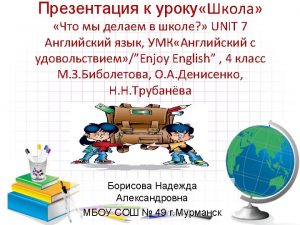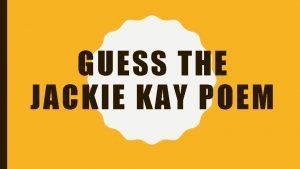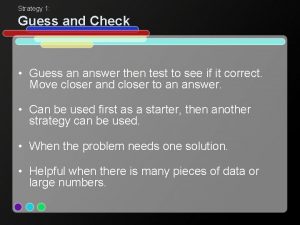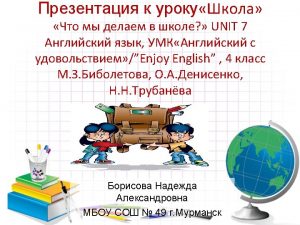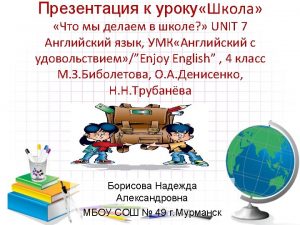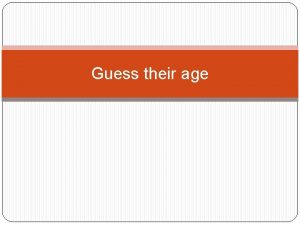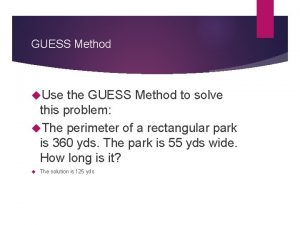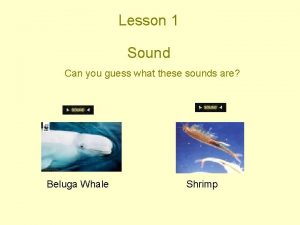Can you guess the topic of todays lesson









































- Slides: 41

Can you guess the topic of today’s lesson? Video http: //openlibrary. org/books/OL 9940982 M/Biology_Science_Skills_Worksheets_with_Answer_Key_(Holt_Scien ce) Super cool flash animation Topic 5

Evolution is the cumulative change in the heritable characteristics of a population. If we accept not only that species can evolve, but also that new species arise by evolution from pre-existing ones, then the whole of life can be seen as unified by its common origins. Variation within our species is the result of different selection pressures operating in different parts of the world, yet this variation is not so vast to justify a construct such as race having a biological or scientific basis.

Homework: Flipped lesson 5. 3 (see moodle)


Charles Darwin (1802 -1882) The term Natural selection was introduced by Charles Darwin in his book The Origin of Species

“. . We can doubt (remembering that many more individuals are born than can possibly survive) that individuals having any advantage, however slight, over others, would have the best chance of surviving and procreating their kind? On the other hand, we may feel sure that any variation in the least injurious would be rigidly destroyed. This preservation of favourable variations and the rejection of injurious variations I call Natural Selection. ”







Struggle for survival Despite sexual reproduction requiring a lot of energy animals and plants often greatly overproduce the number of organisms than can be supported (struggle for survival). This occurs because there are not enough resources and results in competition between organisms. Lets get competing!!

Modelling Natural Selection in action • On a distant planet there exists 4 species of a creature called a Woolybooger • Each Woolybooger is similar except their mouth has variations.

All woolyboogers eat beans. Some have a mouth shaped like a clothespeg, some like tweezers and others like a needle. • One year a new species of woolybooger was discovered, this was called the Spoon-Mouthed Woolybooger

Each of you will play the part of a woolybooger on this planet. • You will run through • Start with 1 minute on several trials. the clock. • Each trial will require • Then reduce the time your woolybooger to to 45 seconds, then gain at least 20 30 seconds, then 15 beans. seconds. • If 20 beans are not acquired during the time period, your woolybooger has died.

When a woolybooger dies, you can play the offspring of the surviving woolyboogers • Q: Can you think of any real-life examples of the woolybooger, where one species has a definite advantage over another? • Q: If only one species is considered the "fittest", why do we still have so many variations among species

Exam question Higher paper Complete exam question – 15 min WORK INDIVIDUALLY!!!!! Swap with your partner Mark the questions

WHAT DID YOU GET ? ? ?


Evidence for evolution – artificial selection (selective breeding of animals) > We have caused change over time in domestic animals We have bred together those animals with the desired characteristics to create more of the same

Selective breeding • Artificial selection is the foundation of selective breeding in both plants and animals. • Domesticated breeds of animals have been developed from wild species by selecting individuals with desirable characteristics/traits, and breeding from them. This is selection for. • When an individual displays a negative characteristic it will not be allowed to mate. This is selection against. • The striking differences in the heritable characteristics of domesticated breeds give use evidence that species can evolve rapidly.

Evidence for evolution – the fossil record (paleontology) • Fossils provide glimpses of the shape and anatomy of previous living species • Allows scientists to make comparison of anatomy to show a gradual change • Where it is the case that a fossil or surrounding rock can be accurately dated we have good evidence of the history of life

Homologous structures Different animals share the same forearm structure

HOMOLOGOUS STRUCTURES • Are similar in fundamental structure • Are similar in position and development but not necessarily in function • Are similar because of a common ancestry • Example Bones in the limbs of vertebrates which are strikingly similar and appear to be a modification on an ancestral five-fingered (pentadactyl limb). The most likely explanation is that they have evolved from a common ancestor.

Analogous structures are not evidence • Resemble each other in function but differ in fundamental structure • Do not derive from a common ancestral feature • Superficial resemblances • Example Wings of birds and insects which are only similar in their function as aerofoils.

Evidence for evolution – Comparative embryology These are the embryos of: tortoise, pig, cow, chicken, fish, rabbit, salamander and human. Which one is which?

Can you tell now? ? ?

What about now? ?



TASK In your teams you are to explore the evidence we have for evolution to produce: 1. A short presentation covering the evidence you have acquired 2. A summary chart You will present this on Thursday’s lesson

Play as students enter

http: //openlibrary. org/books/OL 9940982 M/Biology_Science_Skills_Worksheets_with_Answer_Key_(Holt_Scien ce) Topic 5 Evolution and Biodiversity Starter: Watch video (graphic warning – dissection) Homework: Complete worksheet and access extra information on moodle to complete your work booklets Evidence for evolution Dawkins

Market Place

Fossil Evidence • Fossils show changes over time (in organisms). • Fossilized organisms are different from existing ones and yet they share features with existing organisms(homologous structures). • This suggest common ancestry. • The fossil record is incomplete • Fossils are dated by studying the radioactivity in fossils

Homologous Structures • • Comparative anatomy of groups of animals or plants shows certain structural features are basically similar. Homologous structures are those that are similar in shape in different types of organisms. Structural similarities imply a common ancestry. Homologous structures are used in different ways. E. g. pentadactyl limb in vertebrates / modification of ovary wall or pericarp to aid seed dispersal. There has been adaptation to different modes of locomotion in particular environments e. g. bat’s wing and human hand. The more exclusive the shared homologies the closer two organisms are related. There are certain homologous structures in some species with no apparent function such as human appendix (homologous with functional appendix in herbivores;

Selective breeding • • Plants or animals with favourable characterisitcs are bred to increase their numbers. Shows that species can change over time E. g. Wheat with higher yeild, domestic dogs, cows with higher milk production Artificial selection is the foundation of selective breeding in both plants and animals. Domesticated breeds of animals have been developed from wild species by selecting individuals with desirable characteristics/traits, and breeding from them. This is selection for. When an individual displays a negative characteristic it will not be allowed to mate. This is selection against. The striking differences in the heritable characteristics of domesticated breeds give use evidence that species can evolve rapidly.

Outline the evidence for evolution provided by homologous structures. (6)

• comparative anatomy of groups of animals or plants shows certain structural features are basically similar; • homologous structures are those that are similar in shape in different types of organisms; • structural similarities imply a common ancestry; • (homologous structures) used in different ways; • example is pentadactyl limb in vertebrates / modification of ovary wall or pericarp to aid seed dispersal / other suitable example; • adapted to different mode of locomotion in particular environment / example of two differences such as bat’s wing and human hand; • illustrates adaptive radiation since basic plan adapted to different niches; • the more exclusive the shared homologies the closer two organisms are related; • certain homologous structures in some species with no apparent function such as • human appendix (homologous with functional appendix in herbivores); 6 max

Allopatric Speciation >
 Guess the topic of the lesson
Guess the topic of the lesson Four steps of communication
Four steps of communication If you think you can you can poem
If you think you can you can poem Jimmy maths
Jimmy maths Guess where are we going
Guess where are we going Guess who poem
Guess who poem Can you guess who he is
Can you guess who he is Have a look at these pictures
Have a look at these pictures Guess the topic
Guess the topic Todays sabbath lesson
Todays sabbath lesson 25 creative ideas for sabbath school
25 creative ideas for sabbath school We have class today
We have class today If you can imagine it you can achieve it
If you can imagine it you can achieve it If you cannot measure it you cannot manage it
If you cannot measure it you cannot manage it If you can’t measure it, you can’t manage it
If you can’t measure it, you can’t manage it You cant manage what you cant measure
You cant manage what you cant measure Vertikale kennzahlen
Vertikale kennzahlen Cubing can help you gather details about a topic by
Cubing can help you gather details about a topic by Broad topic and specific topic examples
Broad topic and specific topic examples Narrow down topic
Narrow down topic As the doctor approaches why is kino feeling rage
As the doctor approaches why is kino feeling rage Kinds of comparison
Kinds of comparison You can tell harris about it just ____(easily) as i can
You can tell harris about it just ____(easily) as i can Positive comparative superlative
Positive comparative superlative Through you blind eyes are open
Through you blind eyes are open Unit 5 can you swim
Unit 5 can you swim Todays generations
Todays generations Todays with apostrophe
Todays with apostrophe Todays worldld
Todays worldld What is todays temperature
What is todays temperature Todays globl
Todays globl Todays wordlw
Todays wordlw Chapter 13 marketing in todays world
Chapter 13 marketing in todays world Todays plan
Todays plan Midlands 2 west (north)
Midlands 2 west (north) Todays health
Todays health Todays objective
Todays objective Todays objective
Todays objective Today's objective
Today's objective Todays whether
Todays whether Todays vision
Todays vision Todays objective
Todays objective
